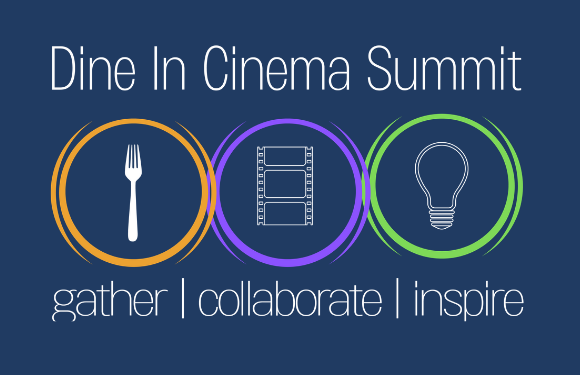Held virtually this year, the annual Dine In Cinema Summit encouraged movie theater owners and managers to expand their events and offerings beyond just films, while suggesting other innovative methods to fulfill audience expectations in this new world of increased streaming and shortened theatrical windows.
In a world of virtually-unlimited entertainment options at home, out-of-the-box incentives to compel audiences to leave the house emerged as a recurring theme throughout the day’s sessions.
“When we turn around and we make it experiential, it wins,” Flix Brewhouse Chief Operating Officer Matthew Baizer stated. “We started something called FanFest events that have a giveaway associated with it, once a month. It’s the title, it’s dressup, it’s a themed menu, as opposed to just showing Grease on Saturday night. Those seem to work exceptionally well. Why? Because there’s an experience component to them.”
Sandy Karp, vice president of construction and development at luxury cinema chain iPic, agreed.
“People even come to watch Netflix films at iPic, because of the experience. It’s really not for anything else, because they can go down the street for $5 at an AMC and go watch the same film,” said Karp, whose chain includes features including gourmet menus with in-theater dining and spaced seating ‘pods’ instead of adjacent chairs. “But they don’t. They come to us.”
Baizer added that iPic could indicate a shift to dine-in cinemas increasing its market share in coming years.
“The traditional exhibitors are going to have a rougher go of it than the dine-in exhibitors. Because you can simulate popcorn and soda. No offense, Pepsi! I’m a customer!” he laughed, poking fun at fellow panelist and PepsiCo Director of Sales Siobhan Scalamogna. “But you can simulate that in your home quite easily, along with your big screen. You can’t simulate three courses and a table, all these other wonderful accoutrements that the cinema dining folks provide.”
The traditional concept of going to “the movies” may likely give way to a more all-encompassing experience moving forward, with an increasing share of locations opting to include alternative programming besides films.
John Plumpton, principal at RevelHouse Architecture and strategic partner at Fresh Strategies, recommended uses as varied as fitness clubs, bowling alleys, ropes courses, laser tag, corporate events, comedy shows, lectures, miniature golf, playgrounds, arcades, electronics stores, even bookstores and libraries. (Fresh Strategies CEO Bill Tishler also chimed in to suggest nonprofits such as universities and churches could rent auditoriums.)
“You do have a lot of potential just with your physical asset. The interesting thing is that they’re already a free space with tall ceilings. This opens you up to a lot of different uses that traditional spaces don’t have,” Plumpton said.
“You generally have tiered structures, so you have excellent sightlines. And you already have in place nearby infrastructures such as [bathrooms] and food concessions. Which in most cases are the costly part of your projects, but in your case you already have them in place,” Plumpton elaborated. “So your net area is not only the cheapest space, it’s potentially the most productive.”
Theresa English, principal at TK Architects, suggested that alternate uses not be limited just to inside auditoriums, but also on top of them too.
“One of the great underutilized concepts is your roof, especially in an urban area,” English noted. “You want to think about farm-to-table? Can you use your roof for growing herbs and vegetables that you want to serve in your facility?”
Optimizing an existing site’s real estate may drive down the national screen count, even when benefitting the operator. Tishler related an anecdote about an underperforming 16-screen cinema where he decided to put in a barcade and bowling alley.
“Once we closed down four auditoriums for demolition, we realized that there was absolutely zero impact on attendance to the facility,” Tishler revealed. “We weren’t dealing with an underperforming facility. We were dealing with a facility that was just too big for the marketplace.”
Cinemas in North America have begun exploring the potential of converting part of their sites to multi-use entertainment facilities, part of a larger trend that has seen the rise of Cinema Entertainment Centers across the market. The shift from cinemas to out-of-home entertainment destinations is just one of the ways today’s exhibitors are contending against the instability of studios’ release slates.
Even once the pandemic passes and audiences return to cinemas, leading executives are preparing for consolidation in the near future when it comes to screen counts.
“We were over-screened, as a nation. We had too many screens, coming into this [pandemic],” admitted Rob Novak, VP of Concessions and F&B at Marcus Theatres. “That demand is not going to be there when we reopen, whether we like it or not.”
Videos of all 2021 virtual panels can be viewed here.



Share this post